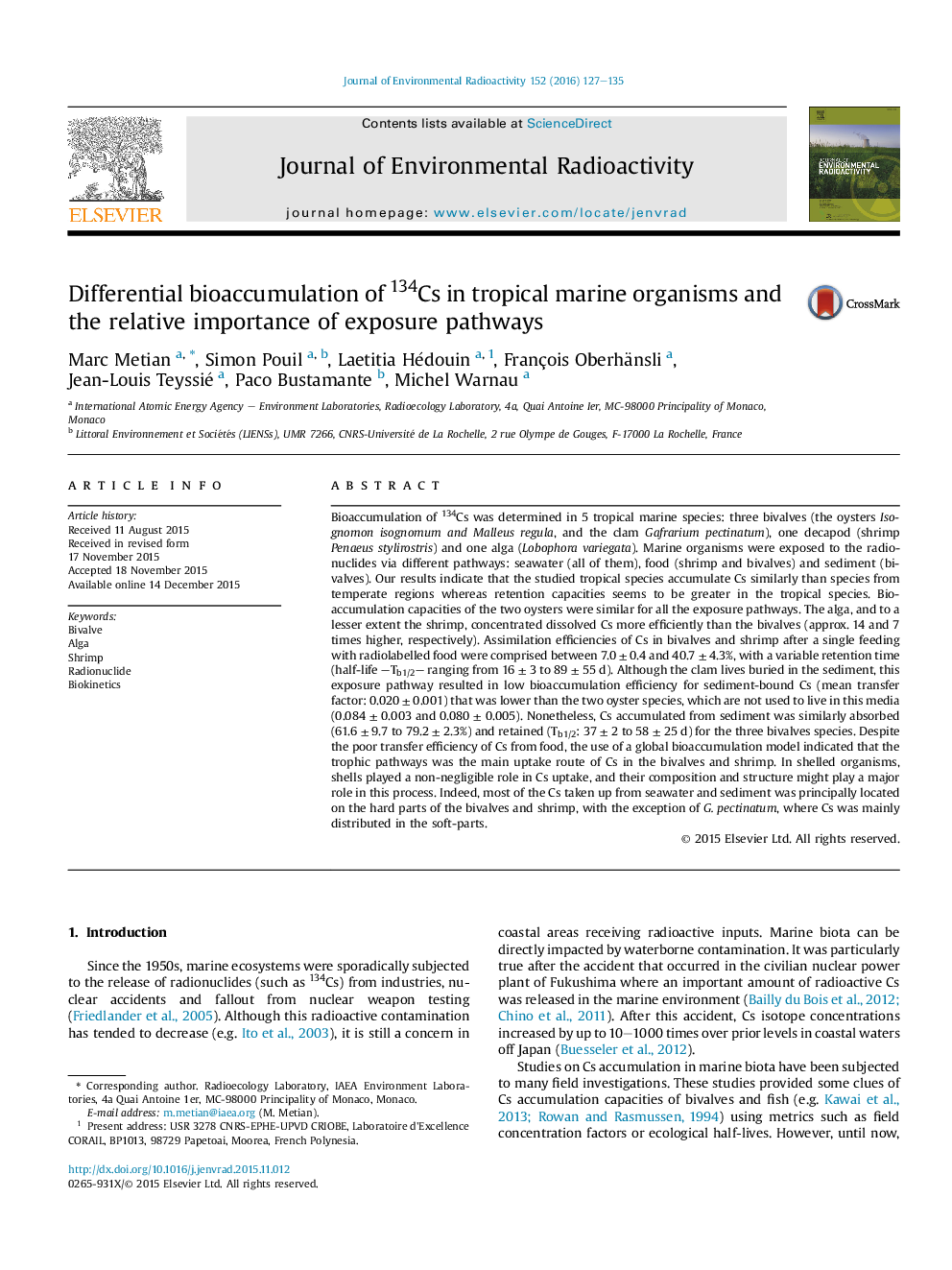| کد مقاله | کد نشریه | سال انتشار | مقاله انگلیسی | نسخه تمام متن |
|---|---|---|---|---|
| 1737774 | 1521582 | 2016 | 9 صفحه PDF | دانلود رایگان |

• Tropical marine species accumulate 134Cs similarly to species from temperate regions.
• Absorption efficiencies of 134Cs in tropical marine species are relatively higher than species from temperate regions.
• Food is generally the major uptake pathway of Cs in the tropical oysters clam and shrimp.
• Interspecific differences exist for Cs accumulation capacities of tropical bivalves but are limited between studied oysters.
Bioaccumulation of 134Cs was determined in 5 tropical marine species: three bivalves (the oysters Isognomon isognomum and Malleus regula, and the clam Gafrarium pectinatum), one decapod (shrimp Penaeus stylirostris) and one alga (Lobophora variegata). Marine organisms were exposed to the radionuclides via different pathways: seawater (all of them), food (shrimp and bivalves) and sediment (bivalves). Our results indicate that the studied tropical species accumulate Cs similarly than species from temperate regions whereas retention capacities seems to be greater in the tropical species. Bioaccumulation capacities of the two oysters were similar for all the exposure pathways. The alga, and to a lesser extent the shrimp, concentrated dissolved Cs more efficiently than the bivalves (approx. 14 and 7 times higher, respectively). Assimilation efficiencies of Cs in bivalves and shrimp after a single feeding with radiolabelled food were comprised between 7.0 ± 0.4 and 40.7 ± 4.3%, with a variable retention time (half-life –Tb1/2– ranging from 16 ± 3 to 89 ± 55 d). Although the clam lives buried in the sediment, this exposure pathway resulted in low bioaccumulation efficiency for sediment-bound Cs (mean transfer factor: 0.020 ± 0.001) that was lower than the two oyster species, which are not used to live in this media (0.084 ± 0.003 and 0.080 ± 0.005). Nonetheless, Cs accumulated from sediment was similarly absorbed (61.6 ± 9.7 to 79.2 ± 2.3%) and retained (Tb1/2: 37 ± 2 to 58 ± 25 d) for the three bivalves species. Despite the poor transfer efficiency of Cs from food, the use of a global bioaccumulation model indicated that the trophic pathways was the main uptake route of Cs in the bivalves and shrimp. In shelled organisms, shells played a non-negligible role in Cs uptake, and their composition and structure might play a major role in this process. Indeed, most of the Cs taken up from seawater and sediment was principally located on the hard parts of the bivalves and shrimp, with the exception of G. pectinatum, where Cs was mainly distributed in the soft-parts.
Journal: Journal of Environmental Radioactivity - Volume 152, February 2016, Pages 127–135